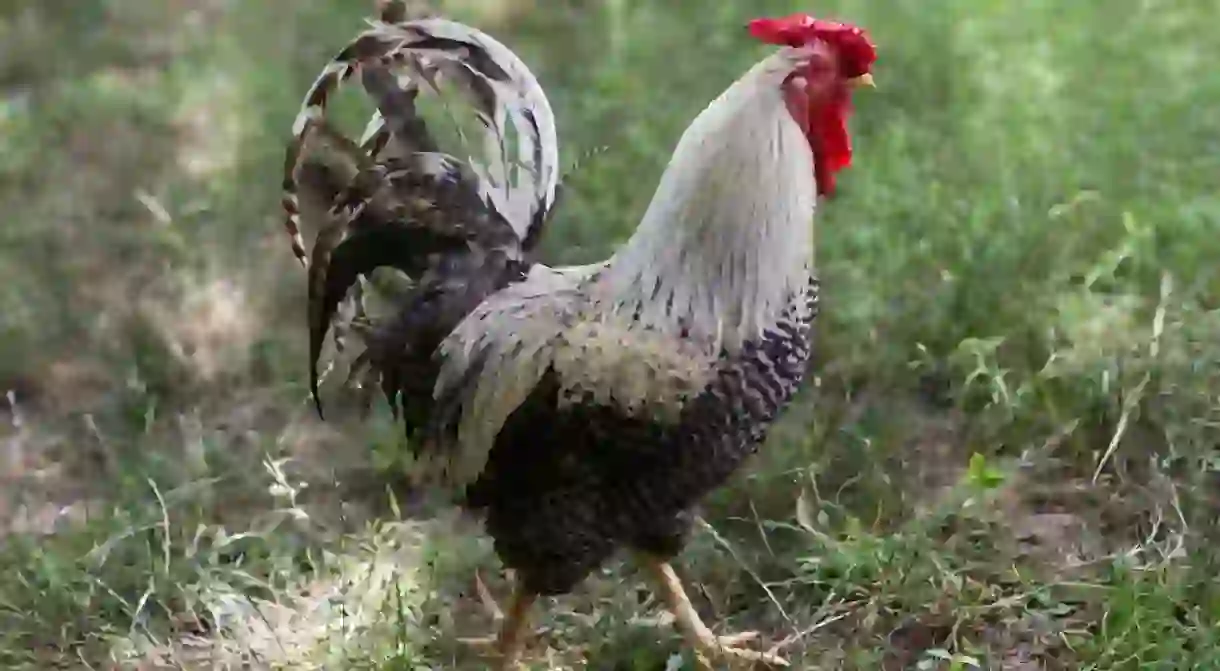Costa Rica vs Nicaragua: Who Really Invented Gallo Pinto?

The origin of gallo pinto is a highly disputed one – Costa Rica and Nicaragua both claim gallo pinto as their own national dish. Read on to find out more about this delicious mystery.
What is gallo pinto?
Gallo pinto is a staple of the Costa Rican and Nicaraguan diet. It consists of rice, beans, cilantro, peppers, and spices. It is typically served as part of a traditional breakfast, but it is not uncommon to see gallo pinto served with every meal. If you find yourself in Costa Rica or Nicaragua, you absolutely must indulge in this dish. Gallo pinto is also usually served with eggs, queso fresco, tortillas, and sweet plantains when it is eaten at breakfast.

Where did gallo pinto come from?
Both countries agree that the historical origin of gallo pinto is Afro-Caribbean. Nicaraguans claim that they were eating gallo pinto long before the Costa Ricans. However, the first written account of gallo pinto showed up in the historical book Mamita Yunai by Carlos Luis Fallas. In this book, both Costa Ricans and Nicaraguans were working together on banana plantations on the Caribbean coast in Costa Rica where gallo pinto was a staple component in the diet. The book claims that Nicaraguans took the Afro-Caribbean recipe back to Nicaragua and the Costa Ricans brought the recipe back to the Central Valley and made it a traditional meal there too.
What is the difference between recipes?
While the battle between the two neighbors continues as to who is the originator of this delectable dish, there is a difference between the two countries’ recipes. Costa Rican gallo pinto is made with black beans while Nicaraguan gallo pinto is made with red beans. It seems everyone from both countries knows how to make gallo pinto, but recipes tend to be slightly different depending on the spices used and secret family recipes.

How did gallo pinto get its name?
Both Nicaraguans and Costa Ricans have very similar anecdotes about the confluence of this famous rice and beans dish. In short, a farmer with a prized spotted rooster invited the local villagers to a feast where he was planning on serving the rooster. On the day of the feast, so many people showed up that there was not going to be enough rooster to go around. In a panic, the farmer asked his help to whip together a large batch of rice and beans to supplement the meal and on that day gallo pinto was born. The name gallo pinto translates to spotted rooster. The fact that both countries share this story makes it even more difficult to determine the true originator. There are multiple stories on both sides as to how gallo pinto came to be and where the name came from and both countries stand strong behind the history of their national dish.

Who is the current Guinness Book of World Records Holder?
Both countries take such strong ownership and pride in “their” national dish that they have even gone as far as to compete in the Guinness Book of World Records for the largest quantity of gallo pinto ever created. Costa Rica was the first to do this. In 2003, 438 kilograms/965 pounds of gallo pinto was constructed under the watchful eye of official representatives of the Guinness Book of World Records. Two-weeks later, the Pharaoh Casino in Nicaragua announced that they would beat Costa Rica in this challenge because gallo pinto is Nicaragua’s national dish, not Costa Rica’s.
So, two-weeks later, 15 chefs created 544 kilograms/1,200 pounds of gallo pinto, which fed 9,000 people and stole the record title. The battle has continued year after year with the last being in 2009 when Costa Rica made 1,497 kilograms/3,300 pounds of rice and 1,197 kilograms/2,640 pounds of beans and fed 50,000 people. Whether Nicaragua will step up to the plate again is undetermined at this time.
The conclusion?
There isn’t one. There is no readily available conclusive evidence at this point from either side as to who truly was the first to create gallo pinto. There are multiple origin stories and anecdotes from both Costa Rica and Nicaragua that will likely sway your opinion back and forth, but in the end what really matters is that gallo pinto can be enjoyed every single day in these two spectacular countries, and it is safe to say everyone is happy that someone, somewhere created it.













